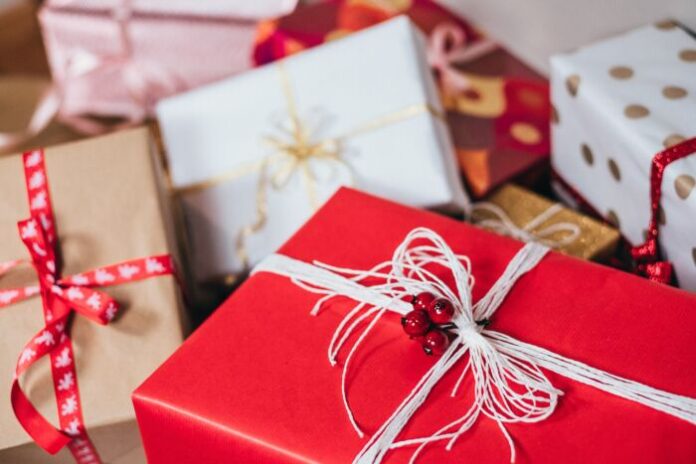
The health emergency caused by Covid-19 is still the protagonist of our lives and even the Christmas that awaits us will be different from past ones. As happens every year, however, WWF Italy proposes a green reinterpretation of the Christmas holidays, which will allow us to respect traditions, but with an eye to environmental protection which, never as in this historical moment, is also an human health.
Here are the 5 tips to follow like a lucky star, to make even holidays more sustainable.
THE GOOD MENU
We choose an eco-dinner with the family: to make it there are dishes of traditional Italian cuisine, as well as strictly vegetarian ones, perfect for balancing the taste and respect for nature. Among these, the Tuscan ribollita, bean soup, pumpkin tortelli, Roman-style or fried artichokes, salad reinforcement from Campania. You can also prepare green recipes by replacing, for example, the meat sauce with vegetables or legumes. For fish, prefer lesser-known and little-requested species, such as horse mackerel, alliterate tuna, tombarello, zerro, mullet, bluefish, together with molluscs such as clams, mussels and oysters.
In order not to make a mistake at the table, follow 3 fundamental principles: seasonal, local products, zero food waste with the addition of the right size for the fish!
LIGHTING AND DECORATIONS
There are climate-saving lights for the tree or the crib. Choose LED lights and lights, avoiding incandescent ones. Led lights are a little more expensive than the others, but they last longer and allow a safe amortization over time of the investment thanks also to a saving in the bill of about 40%. Lower energy consumption means fewer CO2 emissions into the atmosphere, therefore less impact on the climate. They are also safer as they generate little heat, minimizing the risk of fires due to overheating. For the outdoors, choose lights equipped with a photovoltaic panel: 1 hour of sun is enough to have 10 of light! For Christmas decorations, there are recycled, eco-sustainable materials and even edible decorations made with seasonal fruit and vegetables in full natural-chic style: garlands of dry leaves, acorns and twigs in autumn colors for the centerpiece, natural pine cones and corks used as placeholder. Instead, leave moss, holly, mistletoe (all protected species), ferns and winter flowers in nature.
CHRISTMAS TREE
The best thing you can do is decorate plants you already own or buy a local evergreen (juniper, strawberry tree, citrus) suitable for our climates. If you want the fir, best taken from a local nursery, checking the origin and the presence of a suitable earthen bread and vital roots. Treat it with care and after the holidays transfer it to a larger pot, placed in a cool and humid area of the terrace or garden. To be more creative you could opt for a “do it yourself” tree with recycled or recycled materials. For the decorations, choose decorations of glass, wood, or colored salt dough, perhaps to make with the children. Another solution is dried fruit, marzipan or popcorn chains that, after Christmas, you can put on the terrace to refresh the cold birds.
A GIFT FROM YOUR HEART
Original packages recovering newspapers, musical scores, comics but also fabrics or recycled paper. Avoid metallic paper, which is not recyclable. To decorate the package, raffia, rope, spice sticks, instead of plastic ribbons. No gifts from illegal species trafficking, shahtoosh shawls, turtle carapace jewelry or shark teeth, big cat skins and claws, inlaid cetacean bones, elephant tusks and skins, coral and shells. Not even exotic animals without CITES certification and without having ascertained the actual willingness to care for them in compliance with their specific needs. A beautiful and original choice could be to join the “At Christmas put your heart” campaign, giving away or giving oneself the adoption of a species among the most threatened and victims of phenomena such as habitat destruction and illegal trade. By 2050, koalas and polar bears could disappear forever; in Southeast Asia, over 12 million lethal traps are decimating tigers and their prey; in Italy, the Marsican brown bear is in critical danger of extinction and there are just 2,000 individuals of pandas free in the wild in the world. On the website wwf.it/adozioni it is possible to symbolically adopt one of the many animals at risk and in this way the WWF projects to protect them will be supported. By choosing the digital adoption kit, then, the gift will be zero impact!
WHERE DO I THROW IT?
Waste during the Christmas holidays increases on average by 30%: we all become super-consumers compared to other days of the year. Do not add any other pollution to the already pressing one that has seen a wide use for sanitary needs of disposables. For a #plasticfree Christmas, watch out for packaging, boxes and bottles. Use plates and glasses from the ‘service’ for the dinner and, if necessary, prefer those in bioplastic, paper or bamboo that you will dispose, even dirty, with food waste. Try to shop as much as possible of quality loose and artisanal products. Reduce the volume of packaging before throwing it out, separate the various components of a packaging as much as possible and always separate them. And to remove any doubts about how to properly recycle the necessary objects and materials, consult our section Time to recycle and download SmartRicicla, the application for separate collection.






































